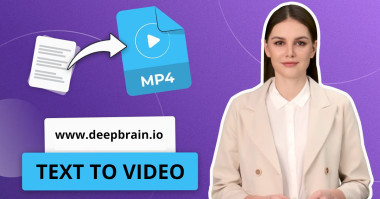The Future of E-Learning: Text to Video in Education
##The Future of E-Learning: Text to Video in Education In today’s rapidly evolving digital landscape, the realm of education has seen a transformative shift towards more interactive and engaging learning experiences. One of the most exciting advancements in this field is the integration of text-to-video technology in e-learning. This innovative approach combines the power of written content with the visual appeal of videos, revolutionizing the way we learn and absorb information. In this article, we will delve into the future of e-learning and explore how text to video is poised to reshape the educational landscape. #Introduction As technology continues to redefine our daily lives, it’s only natural that it would also reshape the way we learn. Traditional methods of education, while effective, often struggle to fully engage learners and make complex concepts easily understandable. Text-to-video technology offers a dynamic solution that combines the precision of written content with the engagement of multimedia. #Understanding Text-to-Video Technology Text-to-video technology leverages advanced algorithms and artificial intelligence to transform written content into interactive video presentations. This process involves converting written information into visual elements, such as animations, graphics, and narrated explanations. The result is a compelling video that captures the essence of the text while enhancing comprehension. #Benefits of Text-to-Video in Education Enhanced Learning Engagement Incorporating visuals and auditory elements into educational content significantly enhances engagement. Videos stimulate both visual and auditory senses, making learning more immersive and enjoyable. Catering to Different Learning Styles People have varied learning preferences, such as visual, auditory, or kinesthetic. Text-to-video caters to these differences by presenting information in multiple formats, making it easier for learners to grasp concepts. Accessibility and Inclusivity Text-to-video technology also addresses the needs of differently-abled individuals. The combination of text and visuals ensures that content is accessible to those with visual or auditory impairments. Breaking Down Complex Concepts Certain concepts are inherently complex and challenging to explain through text alone. Text-to-video allows educators to break down intricate ideas into simpler visual representations, aiding better understanding. Fostering Creativity and Critical Thinking Creating text-to-video content encourages educators to think creatively and present information in innovative ways. This approach also prompts learners to think critically as they analyze visual elements alongside textual content. Challenges and Considerations While text-to-video technology holds immense potential, it also comes with certain challenges that must be addressed: Maintaining Educational Rigor It’s crucial to ensure that the educational content retains its accuracy and depth when translated into video format. Oversimplification can lead to a loss of educational value. Balancing Visual Appeal and Accuracy Striking the right balance between visual appeal and accuracy is essential. While engaging visuals are important, they should not compromise the accuracy of the information being presented. Data Privacy and Security As with any technology involving data, ensuring the privacy and security of user information is of paramount importance. Robust measures must be in place to protect sensitive data. Implementation in Various Educational Settings Text-to-video technology can be implemented across diverse educational settings: K-12 Education In K-12 classrooms, text-to-video can make subjects more relatable and engaging, helping students develop a deeper understanding of topics. Higher Education In higher education, complex theories and ideas can be simplified through videos, making them more accessible to students across different disciplines. Corporate Training Corporate training modules can benefit from text-to-video technology, making learning more effective and engaging for employees. Future Implications and Trends The future of e-learning is closely intertwined with text to video technology. As AI and machine learning continue to advance, we can expect even more sophisticated and personalized learning experiences. #Conclusion The integration of text-to-video technology in e-learning opens new doors for more effective and engaging education. By combining the strengths of written content and visual elements, learners can absorb information more comprehensively and retain it for longer periods. As technology continues to shape the way we learn, text-to-video is poised to play a pivotal role in revolutionizing education.
